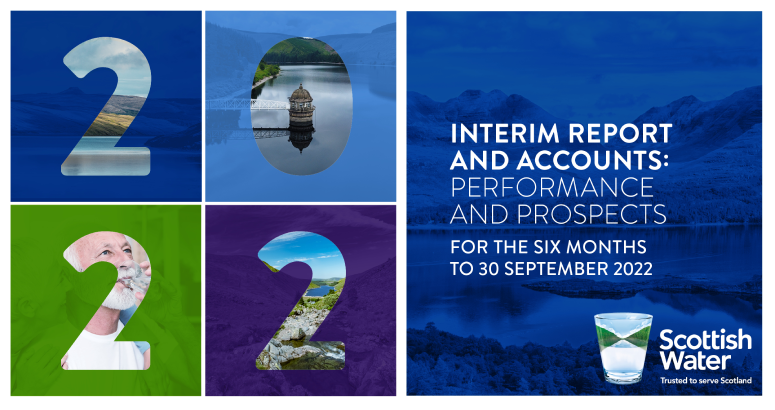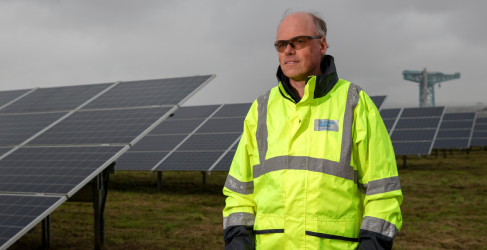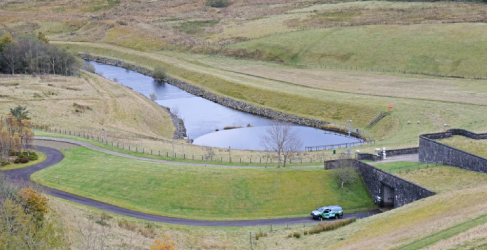Ongoing Investment Vital to Ensure Scotland's Water and Waste Water Services Fit for Future, New Report Highlights
16 December 2022
Interim Report and Accounts
Performance and prospects
Scottish Water is responding to the growing expectation to do more to protect the environment and make its assets more resilient to climate change, a new report has revealed.
And the organisation has highlighted that tough financial decisions lie ahead as the cost-of-living crisis continues at the same time as vital investment is needed to ensure the country’s water and waste water networks are more resilient to the changing weather patterns.
And the organisation has highlighted that tough financial decisions lie ahead as the cost-of-living crisis continues at the same time as vital investment is needed to ensure the country’s water and waste water networks are more resilient to the changing weather patterns.


Its interim Performance and Prospects report covering the six-month period from April to September this year, published today, highlighted that although Scotland faced fewer weather pressures this summer than in other parts of the UK, climate change was bringing serious and growing challenges.“Customers are at the heart of all we do, and we know many are struggling. However, we also know they rightly expect us to deliver water and waste water services to the highest standard possible, both now and in the future.”
Douglas Millican
Chief Executive, Scottish Water
Douglas Millican, Scottish Water Chief Executive, said: “The intersection of the climate emergency and economic crisis is shining a spotlight on the performance and actions of water companies across the UK.
“At the same time, it’s clear we are in a more challenging economic situation than at any time in recent history, causing increasing pressure on the finances and wellbeing of the customers and communities we serve.
“Customers are at the heart of all we do, and we know many are struggling. However, we also know they rightly expect us to deliver water and waste water services to the highest standard possible, both now and in the future.”
Mr Millican said: “There is no room for complacency when it comes to adapting to the changing weather patterns. The summer weather led to an increase in algae blooms at some of our water sources, which impacted the taste and odour of some customers’ water.
“Like many climate-related issues there is no quick or easy fix. It will take time to ensure we look at new and innovative ways to manage such challenges, including some that we have never faced previously.”
Mr Millican also told how, given the rising rate of inflation, Scottish Water, like most organisations, had faced “significant cost pressures” in the price of gas and in chemicals vital to its water treatment and testing processes.
Despite the challenges, the report said Scottish Water’s financial performance was “strong and running ahead of budget” for the 2022/23 year but warned that ongoing economic issues were a longer-term concern.
He said a major transformation was underway at the publicly owned utility that was already starting to deliver benefits including improvements to the amount and speed of data it obtained helping to prevent water supply and flooding incidents.
Looking ahead a priority will be to improve the public sewer system performance by installing monitors and sensors to prevent environmental incidents caused by flooding. And new ways to continue to reduce leakage are being trialled.
The report highlighted how Scottish Water had halved its greenhouse gas emissions over the past 15 years and how it would continue to use land and assets it owns to support decarbonisation and become more energy efficient.
Mr Millican is stepping down from his Chief Executive role next May after a decade in the post and two decades on the Board and Executive team at Scottish Water. Alex Plant, currently Director of Strategy and Regulation at Anglian Water, has been appointed as his successor.
Scottish Water employs more than 4,200 staff. Every day it delivers an average 1.52 billion litres of fresh drinking water to its customers and removes 1.1 billion litres of wastewater. It estimates it needs to double its investment in the next 20 years to replace ageing assets and tackle climate change impacts.








